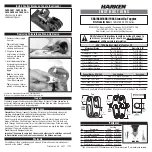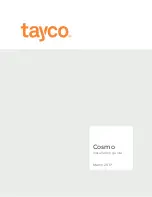
14
15
Apply Compression
• Minimum bed height should be 30” to achieve proper compression. The compression range indicator
arrows on the articulating arm notify the user when the arm is at its lowest point and compression
cannot be applied.
• Avoid wedging the breast tissue, which causes the ultrasound beam to penetrate the tissue at an
angle, which may result in shadowing, artifact and false positives.
• Begin by establishing optimal manual contact and compression of the breast, then activate compression
assist while gradually releasing manual compression.
• There are 3 levels of compression that can applied one level at a time using the increase button on the
right handle of the scanner assembly. The arm locks as pressure is added.
• Manual compression is recommended for women who are not able to tolerate any levels of compression,
such as women with fibrocystic breast tissue, islands of dense breast tissue or women with moderate
to large size cysts/masses.
• Compression level 2 is recommended for most breast tissue. Once the scan has begun, if the transducer
slides or lifts, abort the scan and decrease to a lower level of compression.
• Compression applied to the breast should be sufficient to flatten out the tissue, but not uncomfortable
for the patient. Confirm patient comfort at each level.
• Pressure can be released one level at a time using the decrease compression button on the right handle
or red abort button on the left handle for quick release.
• The breast should be compressed firmly, flattening the tissue equally on all sides.
• The transducer can be tilted medial or lateral to optimize contact.
• Review the image on the touchscreen to make sure there is contact all across the transducer and that
the tissue is level.
• Press the green start scan button on the left handle to begin the scan. The multi-axis lock engages
when the button is pressed.
• The transducer will move to the inferior edge and scan across the breast from the inferior to the superior
edge in 30 seconds.
• When the transducer reaches the superior edge the compression will automatically release and the
transducer is then lifted off the breast.
• If the transducer moves from the superior to inferior edge, press the red abort button to stop the scan.
Then correct the orientation icon on lower right corner of the touchscreen and repeat the scan.
• The scanner assembly should not slide, roll, or lift during scanning.
• Ultrasound coupling lotion is reapplied to the breast before each view.
• The patient is re-positioned with the angled wedge sponge for each side scanned.
• Remind the patient they can breathe normally but should refrain from talking or moving during
the scan to avoid motion artifacts.
Good contact across the transducer
Poor contact across the transducer
Begin the Scan
15



























